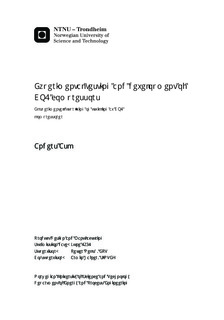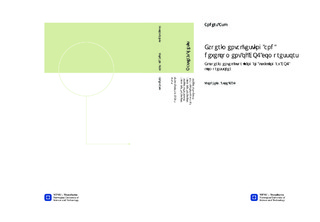| dc.description.abstract | CO2 is a natural refrigerant and is well suitable in many cooling applications. It has been used within the refrigeration industry from the 1900s, but got replaced as the synthetic refrigerants got introduced. In 1990 these fluids were proved damaging to the ozone layer and got replaced by a new series of synthetic fluids, which later have shown to be harmful to the global climate and therefore bound with restrictions from the governments. In the early 1990s at Norwegian University of Science and Technology(NTNU), professor Gustav Lorentzen introduced the transcritical refrigeration process and reintroduced CO2 as a refrigerant with favourable properties. Now the use of CO2 in heat pump applications is wide spread, and competitive alternatives within most markets are presented. However, there are still areas of improvement, and at the laboratories of SINTEF and NTNU a rig is being installed meant to do experiments on high effect CO2 cooling systems, with a cooling capacity of 400kW and a compressor capacity of el 100kW. Currently the rig is placed in Lustenau Austria at Obrist Engineerings facility where a 100kW high efficient semi hermetic 6 cylinder single stage piston compressor is being tested. This compressor is a new development and a result of a cooperation between SINTEF and Obrist Engineering. The background for this development was the lack of single stage compressors able to deliver flow rates in the range of 10 to 90m3=h. For experiment purposes the losses in the reciprocating cycle were evaluated, where the overall isentropic efficiency is most defining for the energy efficiency, and also the defining value for the entirety of all losses in the compressor unit. The test campaign was conducted in different test series, where the test points were set by Obrist Engineering with background in a cooling application on a fishing vessel. 3 series were set, where a fixed pressure ratio of 65/30 bar, 110/30 bar and 80/20 bar was tested in experiments with varying motor speed from 800 - 3800 rpm and a constant superheat at 10K. As the executions showed, some of the test points were not able to be tested, because of lack of power supply in the local power grid, and the maximum input power was set to 94kW. Test results revealed a relatively high overall efficiency with values at 73.5% for a pressure ratio of 65/30 bar. Also for the two other pressure ratios the efficiency showed to be satisfying in comparison with on the shelf compressors commercially available to day. However, the test campaign revealed a high volumetric loss in high pressure ranges, which partly can be substantiated with a relatively high clearance volume due to the shear size of the cylinder. In addition, Pindicated for low speeds versus high speeds shows a possible too small valve area at discharge for the highest speeds. | nb_NO |

